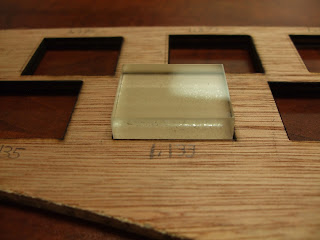Speed Calibration Tests
We suspected that our head speeds on both the 2 inch and 4 inch focal length laser were slower by about a factor of 2 versus the parameters settings indicated in software. However, after running cut and etch tests on wood using Boss Laser standardized test files, we found agreement between the Boss Laser and Build RVA timings of within several percent. Therefore, I attribute our initial concerns to a bias prompted by the very ambitious simulation times indicated in the Preview feature of RDWorks.
The standardized laser cut and engraving test files are found here.
Engraving on Wood
Seth also proved us some practical guidance regarding setting up parameters for working with wood.
1. In the "Cut Optimize Handle" menu, engage the check boxes for (a) ordering, (b) working inside to outside and (c) auto determine. Set your height to 600 in an up to bottom configuration.
2. You can obtain the best results by scanning/engraving perpendicular to the wood grain.
3. Good choices of wood for working with the laser are Cherry and Alder.






